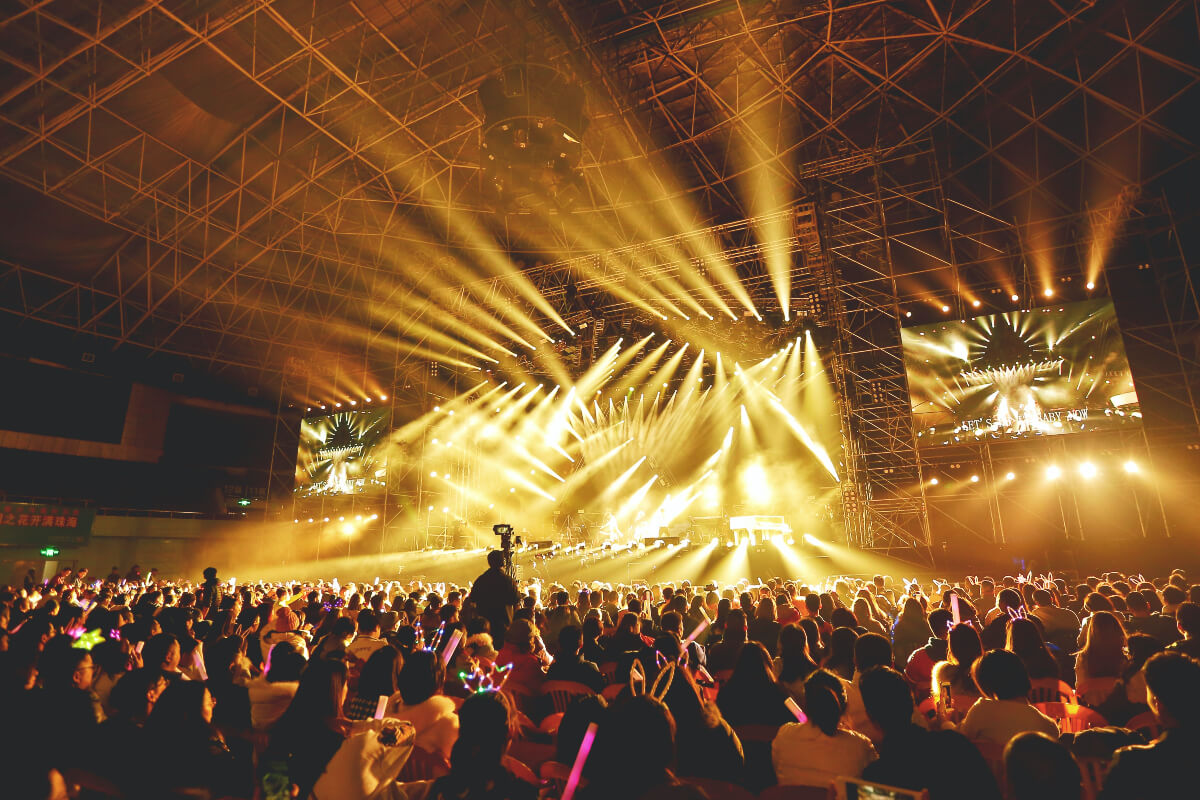In 2020, stages around the world went silent. As the global pandemic shuttered venues, canceled tours, and postponed festivals, artists and audiences alike found themselves separated from one of humanity’s oldest traditions—live performance, Concerts and Entertainment. But rather than fade into silence, the music industry responded with innovation. The virtual concert emerged not only as …
The Rise of Virtual Concerts and the Future of Live Entertainment

In 2020, stages around the world went silent. As the global pandemic shuttered venues, canceled tours, and postponed festivals, artists and audiences alike found themselves separated from one of humanity’s oldest traditions—live performance, Concerts and Entertainment. But rather than fade into silence, the music industry responded with innovation. The virtual concert emerged not only as a lifeline but as a blueprint for the future.
Now, even as physical venues reopen, virtual concerts are not disappearing. They’re evolving. From immersive metaverse performances to interactive livestreams, the landscape of live entertainment is undergoing a profound transformation. The question is no longer whether digital concerts can match traditional experiences and entertainment—it’s how both will coexist to redefine performance art altogether.
When the Stage Went Digital
The rise of virtual concerts didn’t begin with the pandemic, but it accelerated exponentially during global lockdowns. Major artists like Travis Scott, Billie Eilish, BTS, and Dua Lipa turned to digital platforms to connect with fans. What started as simple livestreams from home studios quickly became elaborate, cinematic productions—complete with augmented reality, multi-camera setups, and real-time audience interaction.
Why did virtual concerts take off so quickly?
- Accessibility: Fans from around the world could attend events without the barriers of travel, ticket prices, or venue capacity.
- Scalability: A virtual venue doesn’t run out of seats. Some concerts attracted millions of viewers, a number unimaginable in traditional arenas.
- Interactivity: Chat functions, real-time polling, and virtual meet-and-greets made fans feel part of the experience in new ways.
While nothing can fully replicate the energy of a physical crowd, virtual concerts offered entertainment a compelling alternative in a world where connection had become digital by necessity.
Not Just a Trend—A Technological Evolution
Virtual concerts have grown far beyond grainy Zoom sessions. With the help of powerful digital tools, these events now harness:
- Augmented Reality (AR): Artists perform in fantastical, computer-generated environments that blur the lines between imagination and reality.
- 360-Degree Cameras and VR Headsets: Fans can enjoy immersive views, feeling as though they’re on stage or surrounded by a crowd.
- Holographic Performances: Reviving icons or projecting remote artists in real time, holography has added a futuristic flair to entertainment.
- Interactive Avatars and Gamified Experiences: Especially popular in gaming platforms like Fortnite and Roblox, where virtual avatars dance alongside fans during concerts.
For example, Travis Scott’s Fortnite concert in 2020 attracted over 12 million concurrent players, showcasing how gaming platforms are becoming performance spaces in their own right.
The Economics of Virtual Performance
For artists, virtual concerts opened new revenue streams in a time when touring income vanished. Monetization came from:
- Ticketed livestreams
- Digital merch (including NFTs)
- Fan subscriptions and exclusive access tiers
- Brand sponsorships and platform partnerships
Some artists earned millions through single performances with lower overhead costs than traditional tours. In a digital space, there are no tour buses, roadies, or stage rentals. Instead, the investment shifts to production design and tech development—an increasingly attractive model for both emerging and established talent.
The Fan Experience: Gains and Gaps
While virtual concerts bring impressive benefits, they also face limitations that challenge long-held notions of “live” performance.
Gains:
- Global inclusivity: A fan in Nairobi can watch a concert happening in New York, without leaving home.
- Increased safety and comfort: No crowd crushes, extreme weather, or costly travel logistics.
- Replayability: Missed a show? Many digital concerts offer rewatch options or permanent access with a ticket.
Gaps:
- Lack of physical atmosphere: The collective energy of a crowd, the vibrations of sound, the communal singing—all are difficult to replicate digitally.
- Technology barriers: Not every fan has access to fast internet, VR headsets, or devices capable of streaming in high quality.
- Digital fatigue: As more aspects of life move online, audiences may crave the tactile reality of in-person events even more.
The challenge for organizers and artists is to harness the best of both worlds—offering rich digital content without sacrificing the emotional depth of live human connection.
Hybrid is the Future
The post-pandemic world has shown that it’s not about choosing between physical and virtual—it’s about integration. Hybrid concerts are quickly becoming the norm, where artists perform in front of a live audience while simultaneously broadcasting the show globally.
This dual-access approach opens new doors:
- Smaller venues can reach larger audiences
- International fans are no longer excluded
- Data analytics help artists understand fan behavior in real time
Festivals like Tomorrowland and Coachella have already adopted hybrid formats, offering livestream passes and exclusive online content alongside traditional ticketing.
Enter the Metaverse: A New Frontier
Perhaps the most intriguing evolution lies in the metaverse—a persistent, shared digital world where users interact through avatars. In the metaverse, concerts are not just watched; they are experienced. Fans can:
- Choose how they view the stage
- Interact with each other and the artist’s digital persona
- Collect digital memorabilia and NFTs tied to the performance
Companies like Meta, Decentraland, and Wave are investing heavily in this space, envisioning a future where concerts are full-fledged virtual adventures.
Even independent artists are gaining traction here, using decentralized platforms to build fanbases and monetize without industry gatekeepers.
Rethinking What “Live” Means
The idea of “live” entertainment is evolving. Where it once meant a moment in real time, shared by those physically present, it now includes a spectrum of experiences—from livestreams and holograms to metaverse stages and post-event replays.
This evolution raises important cultural and philosophical questions:
- Does being “live” still require a physical presence?
- Can digital presence create the same emotional resonance?
- How do we preserve authenticity in an era of limitless curation?
As technology continues to innovate, the essence of performance may no longer be defined by geography or time, but by connection, interaction, and immersion.
Final Thoughts: A New Era of Possibility
The rise of virtual concerts is not a replacement for live music or entertainment—it’s an expansion of it. It offers a new canvas for creativity, inclusivity, and global connection. For artists, it’s an opportunity to reach fans in new ways. For fans, it’s an invitation to experience music beyond physical limitations.
In the future, we might buy tickets to a stadium show in our hometown and a metaverse concert in the same weekend. We might swap physical lighters for digital emotes. And while the roar of a crowd may never be truly replaced, the silence once left by empty venues has been filled—not just with sound, but with possibility.




